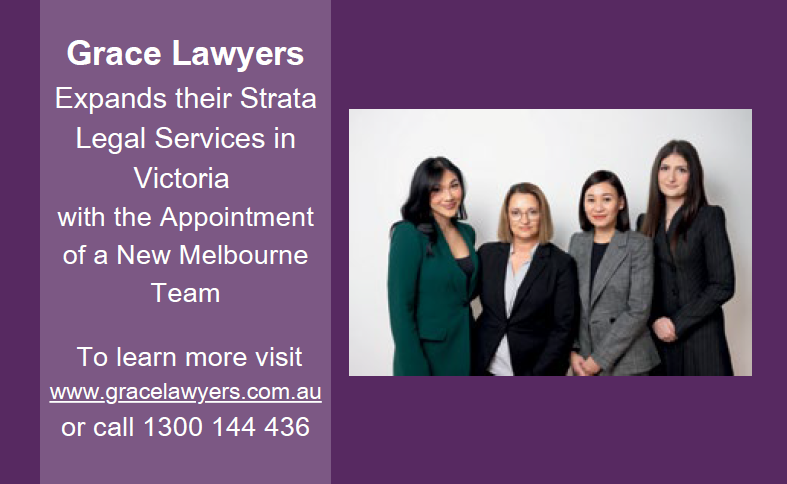Handling Challenges and Resolving Conflict


At the SCA National Conference in 2018 I presented on Resilience and High-Level Dispute Resolution and in 2020, as part of the COVID-19 “hubbub”, I wrote an article on how to deal with it in a business sense.
Recently at the 2024 SCA National Conference I dealt with the third tier, Handling Challenges and Resolving Conflict and covered three main areas:
- Effective strategies for managing conflict and resolving conflicts with stakeholders;
- Navigating challenging situations with professionalism and diplomacy (a challenge for me!); and
- Both of the above using practices and strategies that work.
Effective strategies
Being a solicitor, we get involved in conflicts — it is the job. We must develop strategies on how to get through a dispute, look at the issues from all sides, research the issues/topic, understand people management (as best you can) and deal with the changing environment.
In strata most issues go from the technical to the personal — and that is where it is our role as managers or suppliers to bring everyone back to the technical and try to get to a practical resolution.
As managers, we need to be Switzerland — no favours, but neutral. We hear all, see all and know all, but say what needs to be said — that’s all!
It is worthwhile to review some of the general effective strategies:
Active listening: Ensure that all parties involved feel heard and understood. This involves giving full attention to the person speaking, summarising their points, and asking clarifying questions to demonstrate understanding.
Open communication: Encourage open and honest communication among all parties involved. Create a safe space where individuals feel comfortable expressing their thoughts and concerns without fear of judgment or retaliation.
Clarify misunderstandings: Often, conflicts arise from misunderstandings or misinterpretations. Encourage the parties to clarify their intentions and perceptions to prevent further escalation.
Focus on interests, not positions: Help parties identify their underlying interests rather than their fixed positions. By understanding each other’s needs and motivations, it becomes easier to find mutually beneficial solutions.
Brainstorming solutions: Encourage creative thinking by brainstorming multiple possible solutions to the conflict. Encourage parties to think outside the box and explore unconventional options. Remember as the managers we need to keep it within the legislation also.
Seek compromise: In many cases, reaching a compromise is necessary for resolving conflicts. Encourage parties to identify areas where they can give and take to find a middle ground that satisfies everyone involved — everyone needs to be equally unhappy.
Use “I” statements: Encourage individuals to use “I” statements to express their feelings and concerns without blaming or accusing others. This helps prevent defensiveness and fosters empathy.
Stay calm and respectful: Emotions can run high during conflicts, but it’s essential to remain calm and respectful throughout the process. Avoid personal attacks or aggressive behaviour, as this can escalate the situation further.
Mediation or arbitration: If the conflict persists and informal resolution methods are ineffective, consider bringing in a neutral third party to facilitate mediation or arbitration. A trained mediator or arbitrator can help parties communicate effectively and reach a resolution that satisfies everyone involved.
Follow-up and evaluate: After reaching a resolution, follow up with all parties involved to ensure that the agreed-upon solutions are being implemented effectively. Take the time to evaluate the conflict resolution process to identify any lessons learned and areas for improvement in handling future disputes.
Managing challenging situations
Managing strata schemes is one of the most challenging things I have ever seen, and I have been to many meetings over the years. Managing them is challenging and one I take my hat off to you all for doing. Whilst there are many books, articles, videos, training sessions, etc, you never can really “get it” until you are in it!
Here are some of the basics:
Remain calm: GOOD LUCK. Keep your emotions in check and stay composed, even in high-pressure situations. This helps you think more clearly and make rational decisions.
Active listening: Listen attentively to the concerns and perspectives of others involved in the situation. Show empathy and validate their feelings, even if you disagree with their stance.
Maintain respect: Treat everyone involved with respect, regardless of the circumstances. Avoid making personal attacks or derogatory comments, and focus on addressing the issue at hand professionally.
Choose your words carefully: Be mindful of your language and tone when communicating, both verbally and in writing. Use diplomatic language that is clear, concise, and nonconfrontational.
Focus on solutions: Instead of dwelling on the problem, shift the focus towards finding solutions. Brainstorm ideas collaboratively and encourage open dialogue to explore different perspectives and options.
Set boundaries: If necessary, establish clear boundaries to maintain professionalism and prevent the situation from escalating. Firmly but politely assert your position and communicate any expectations or requirements.
Seek guidance if needed: Don’t hesitate to seek guidance or support from colleagues, mentors, or supervisors, especially in complex or sensitive situations. Their perspective and advice can help you navigate challenges more effectively.
Stay flexible: Remain adaptable and open-minded in your approach to resolving the situation. Be willing to compromise and consider alternative solutions that may better address the needs of all parties involved.
Manage conflicts constructively: If conflicts arise, address them promptly and constructively. Encourage open communication, active listening, and respectful dialogue to find mutually acceptable resolutions.
Follow-up and closure: Once the situation is resolved, follow up with all parties involved to ensure that the agreed upon actions are implemented, and any lingering issues are addressed. Provide closure and clarity to prevent future misunderstandings.
View Comments
(0)